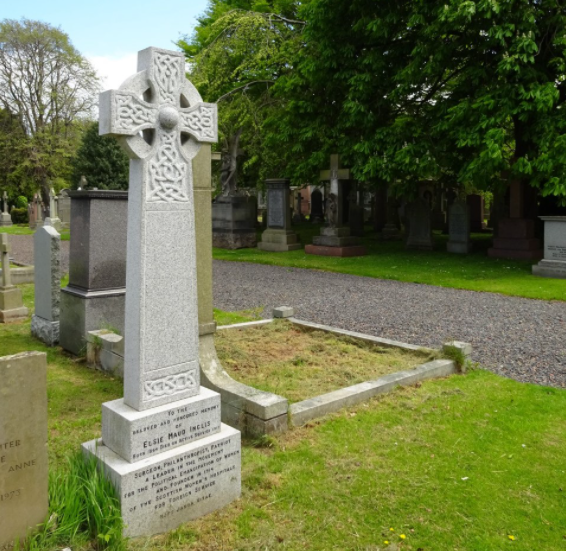Who Was Elsie Inglis? | Edinburgh History
23rd Sep 2021
By Margaret Hubbard, MTI Storyteller
Who was Elsie Inglis? Dr. Elsie Maud Inglis was born in India in 1864. Her family lived there while her father worked for the East India Company. She was lucky, although uncommon at the time, her father believed that girls should be educated. By the time she was in her early twenties, she was in Scotland with an education, determined to study medicine.
She enrolled at the Edinburgh School of Medicine for Women but later studied in Dublin and Glasgow. After this she set up the Edinburgh College of Medicine for Women and after completing her degree in 1894, Elsie opened a maternity hospital.
Her focus was women. She was determined to make it possible for women to have careers in medicine, and wanted to ensure women could access the medical care they needed. At that time a married woman could not have an operation without her husband’s consent, which often left women untreated. Dr. Inglis was very aware this situation was not caused only by men; there were women who also agreed with this line of thinking.
It was not only in health care or the workplace that Dr. Inglis fought the equality battle. She understood that the only way things were going to change was if women had the vote, and by 1906 she was secretary to the Scottish Women’s Suffrage Federation. She marched, she made speeches, she campaigned.
"My good lady, go home and sit still."
At the outbreak of World War I the Scottish Women’s Suffrage Federation was determined to set up hospitals and send doctors and nurses to the field hospitals. Elsie was now 50 years old with a significant national profile, but despite her many achievements the words you see above were spoken to her by a War Office apparatchik in 1914. Was she angry? Disappointed? Or did she just think, ‘When will you ever learn?’
Elsie went home, regrouped, and then approached the armies of France and Serbia. They were less prejudiced and accepted her help. The conditions were both shocking and dangerous. She and her women were dealing with typhus, medical crises, and appalling injuries.
At one point she was captured, and continued her work among her captors. In 1916 she was deported to the UK via Switzerland, but within the year was back to work. Eventually she became ill with cancer, and on her way home died in November 1917. She was brought to Edinburgh and buried in Dean Cemetery.
So, sit still she did not! If I could ask Dr. Inglis, ‘What did you think when he said this?’ I am sure she would smile and say, ‘I did not win that battle but I will win the next one. And in 100 years time girls will have an equal role in society, because we have fought for their rights. You see, we all have a responsibility to improve the world for the generation following, and leave it a fairer place than we found it.’
Elsie is increasingly recognised as the influential Scottish figure she undoubtedly was. For a significant part of the twentieth century Edinburgh children were born at the Elsie Inglis Memorial Maternity Hospital, or as it was called locally, ‘Elsie’s.’
This is why she's mentioned on our new Talking Statues tour among other figures from underrepresented backgrounds, as someone who should perhaps have a statue, but does not.

